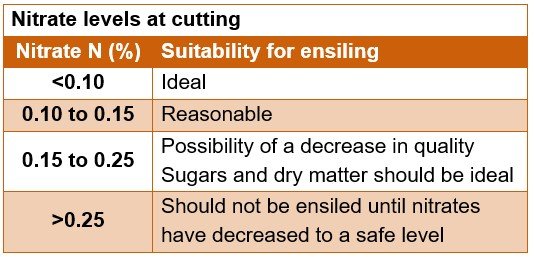Monitoring to Perfect your Silage Cutting Date
Producing good quality forage is key to the profitability of livestock production systems. Minimising the losses in nutritional value through good silage making practice will not only save money and produce cheaper milk or meat but also help to maintain the health of your livestock.
Crop nutrition will influence your targeted date for cutting. The slow spring has caused many farmers to delay applying their slurry and fertiliser. Consequently, adjustments to fertiliser plans will have been necessary in many situations, particularly where field travel has been difficult until the more recent dry weather.
Slurry should not be applied for 12-weeks prior to cutting to avoid contamination and subsequent spoilage of the silage. The window for fertiliser applications this season has been small so nitrate levels should also be a consideration. High nitrates can result in poor silage fermentation via the production of ammonia directly raising the pH, affecting palatability, energy and intakes.
This season, there is certainly case for using the age-old guide to nitrogen uptake of 2 units/acre (2.5 kg N/ha) per day, working backwards from your intended cutting date to calculate the maximum nitrogen to apply. If there is any uncertainty as to whether excess nitrogen has not been utilised, analyse your grass before cutting. Fresh grass analysis costs less than £25 per sample, and you can buy grass analysis reports here. This is a good way to ensure you have the facts, so that you can cut at the right time to help prevent silage quality and cow performance becoming an issue next winter.

Kingshay recommends that grass should not be cut before nitrates have decreased to below 0.10% (see table). Above 0.25% Nitrate N cutting should be delayed, and another fresh grass sample should be taken after 3 to 5 days.
- 2nd May 2023
